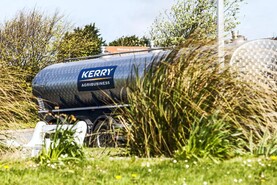We thankfully got back to a bit of milder weather for the Christmas after the cold spell through mid-December, so hopefully everyone got to relax as much as possible and enjoy some down-time over the festive period. The last thing we needed were frozen scraper systems and water troughs through the holidays.
The frost hasn’t knocked back grass cover too much on the farm, so we look to be heading into the spring with plenty of feed in the fields, as well as in the silage pits, so hopefully everything will run smoothly enough on the feed front through the calving season.
Labour on the other hand could be a bit of a challenge with a longstanding member of the team retiring from farming this spring.
Jimmy has been with us for over 30 years, so he will take a fair bit of replacing. He also helped to train most of the other members of the team so he will leave a void around the yard.
The message from local agencies like the Farm Relief Service is that accommodation is key to attracting staff to farms, with the housing crisis and the refugee situation taking up any slack that was in the system.
We might have a solution on farm in that regard, so hopefully we can find someone suitable to replace Jimmy and join the team on farm in Clara.
So, another year draws to a close and, while most dairy farmers will look back on 2022 as a year of extremes in terms of costs, it was also a very strong year for milk price and farmers’ incomes in most cases should be well up on 2021.
Milk price is at a record high, so it’s likely we will see some challenges there through the next 12 months
Fixed milk price schemes were a huge issue in some yards, however, and will continue to cause problems throughout 2023 for some milk suppliers.
Extreme inflation
At the start of the year, we had a lot of worries about the extreme inflation in agricultural inputs and the worry was that it would not be covered by milk prices, but as the year progressed, the demand for all dairy commodities rose substantially to get us out of trouble.
In fact by the end of the year, most farmers were in a strong enough position to stockpile fertiliser, in particular, and some other vital inputs into 2023 to ensure that they have everything in place and on-farm for the coming season.
We have since seen some of these inputs come back in price from the extreme peaks seen in 2022, with fertiliser and diesel in particular dropping significantly in recent weeks.
Electricity on the other hand looks like being a challenge for the early part of 2023 at least.
Milk price is at a record high, so it’s likely we will see some challenges there through the next 12 months.
If 2022 was all about the highs with high costs and high prices, 2023 could be the year of volatility on both sides of the ledger, with prices of both inputs and outputs moving around a lot more.
Hopefully we stay on the right side of it for the most part and we can come through the year in as good health as 2022.






 This is a subscriber-only article
This is a subscriber-only article










SHARING OPTIONS: